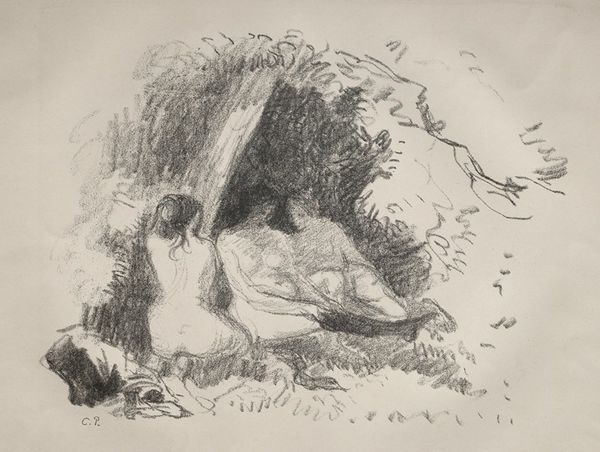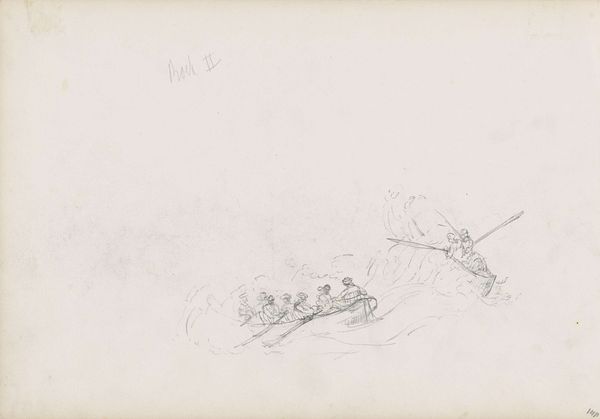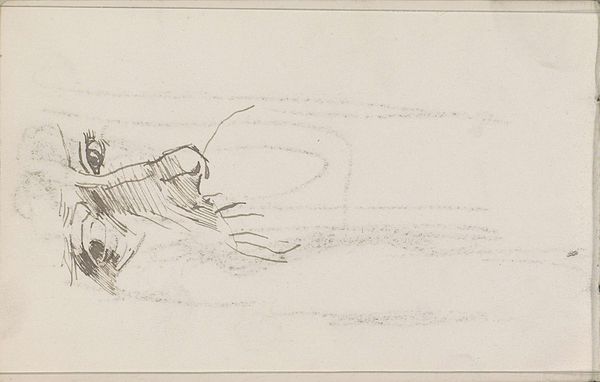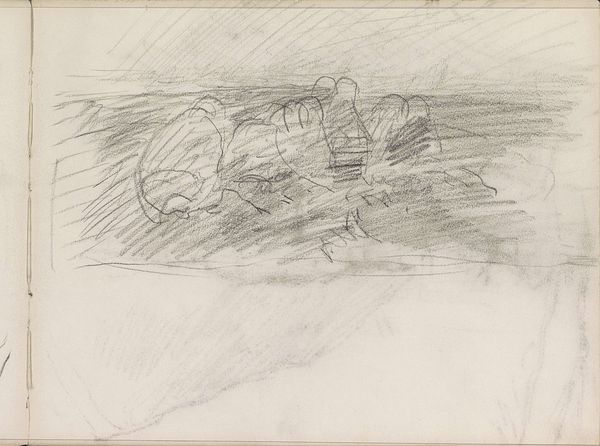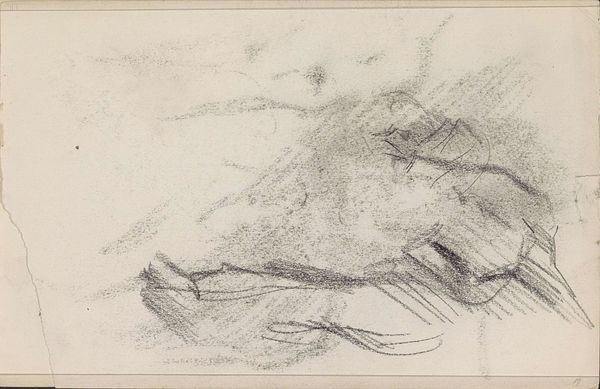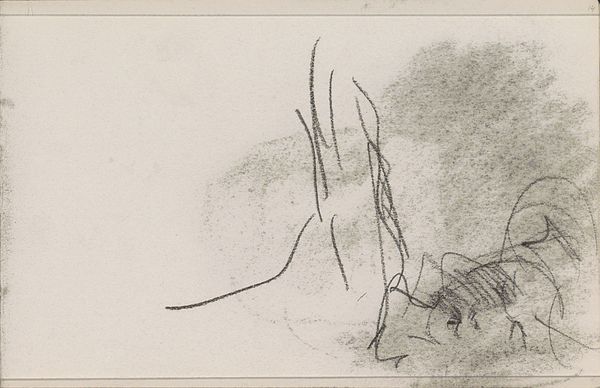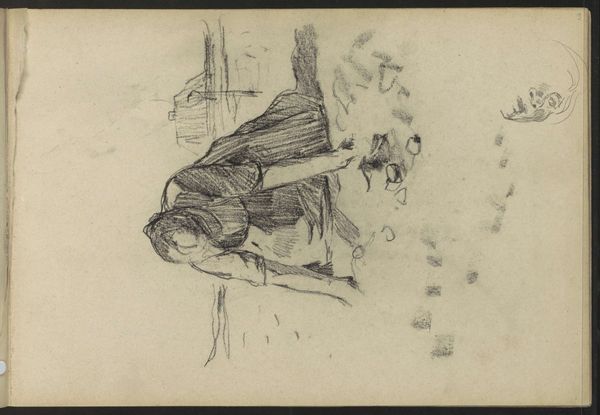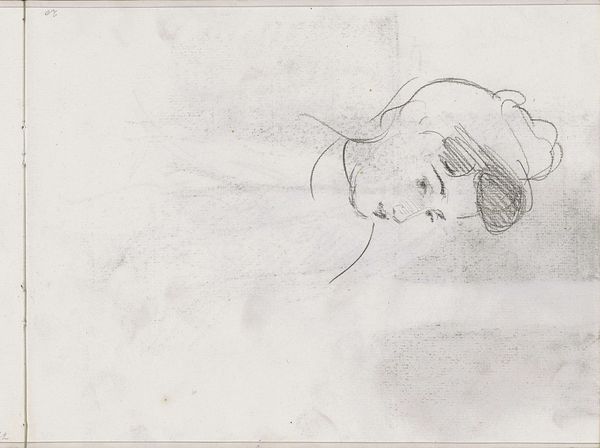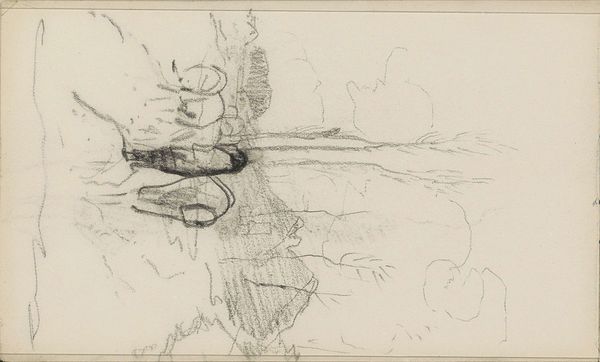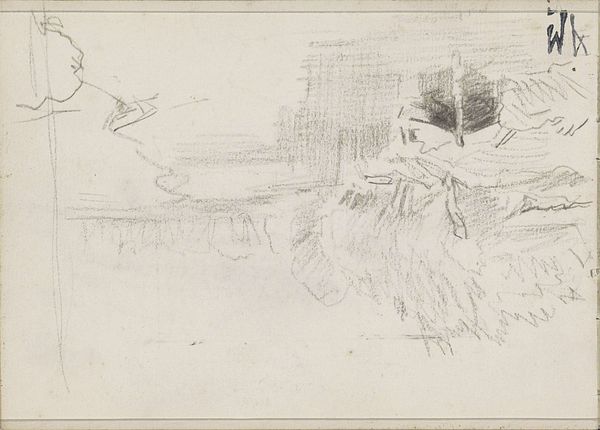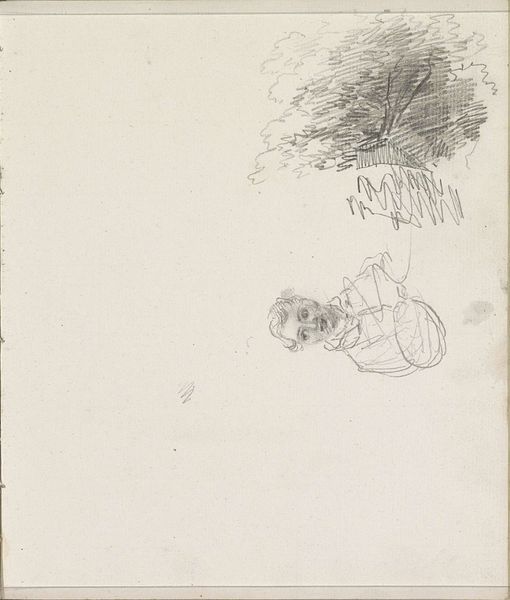
Liggende man met gesloten ogen, mogelijk Frank van Vloten c. 1887 - 1892
0:00
0:00
willemwitsen
Rijksmuseum
drawing, pencil
#
portrait
#
drawing
#
pencil sketch
#
pencil
#
sketchbook drawing
#
realism
Copyright: Rijks Museum: Open Domain
Curator: Before us is "Liggende man met gesloten ogen, mogelijk Frank van Vloten," or "Reclining Man with Closed Eyes, Possibly Frank van Vloten," a pencil drawing created by Willem Witsen between approximately 1887 and 1892. It's part of the Rijksmuseum's collection. Editor: My first impression is one of profound stillness. There's an incredible vulnerability captured in this sleeping figure. It feels incredibly intimate. Curator: Intimacy is a good word for it. This drawing likely comes from a sketchbook, judging from the quick, almost ephemeral lines. Witsen belonged to a circle of artists who advocated for realism, depicting everyday life and scenes with honesty. Think about the social implications—the rising interest in the lives of ordinary people. Editor: I am struck by the visual symbols of sleep: the closed eyes, the relaxed posture. Sleep, through centuries of art, represents not only physical rest but also a kind of psychological escape or retreat. I am also drawn to the strong line around the head that separates it from a lighter toned space. Is this meant to symbolize unconsciousness? Curator: It is fascinating how one may be drawn into interpreting such images. One might assume the lines describe depth of sleep, or perhaps the sitter was moving, or the sketchist was not always paying attention. Witsen, in the spirit of the age, seemed driven by depicting genuine human emotion. The drawing gives insight into male friendship among artists, as van Vloten was within the same circle as Witsen. Editor: The downward slope of the face adds to that feeling of repose. The shading around the figure almost creates a halo effect too, a sense of peace and perhaps even idealization. Curator: Precisely, and what’s important for us to note, and what the Rijksmuseum's holdings showcase more broadly, is this capturing of Dutch artistic expression and this moment when social and political conditions really began shaping artistic subjects and styles. It offers a visual record of shifting cultural values. Editor: It makes me consider the enduring allure of sleep as a subject in art—a constant reminder of our shared human condition, our need for rest and escape, and maybe also a bit of fear, don't you think? Curator: Indeed. Reflecting on it, I'm reminded of how such seemingly simple sketches can unlock a wealth of information about both the artist and the society in which he lived.
Comments
No comments
Be the first to comment and join the conversation on the ultimate creative platform.
